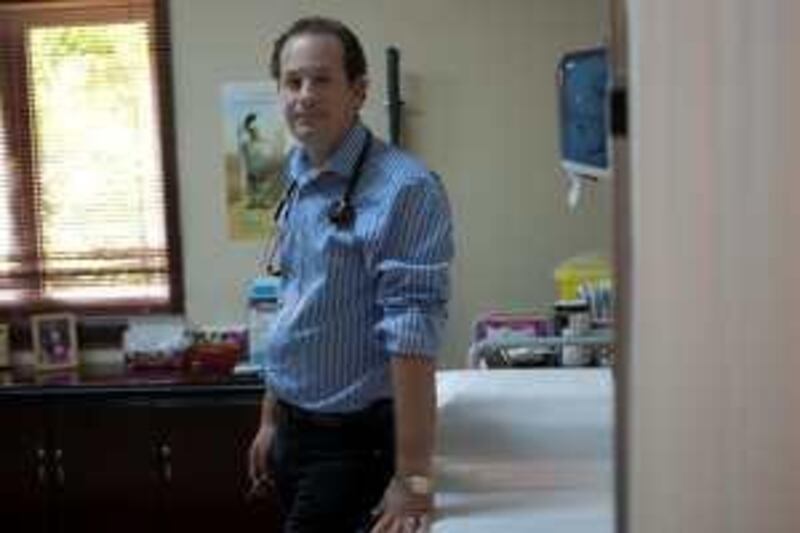ABU DHABI // One of the most vital jobs for emergency staff at a Grand Prix is rescuing a trapped driver from his car. The procedure needs to be thoroughly rehearsed. Ahead of this weekend's drill in extricating drivers from cars at the Formula One track on Yas Island, the Grand Prix's chief medical officer says the medical crew is fully prepared.
Dr Sean Petherbridge, a Briton, and his 83-strong staff will rehearse getting drivers out of cars so they will be ready if any of them crashes and is trapped during the race weekend, October 30 to November 1. Since the track is being used for racing for the first time, its higher-risk sections - such as the fast corners - will be fully covered by medical teams. "A new track needs time for all concerned to learn, and, for this reason, we will run a rehearsal of the medical rescue," Dr Petherbridge said.
Many members of the medical staff have backgrounds in military medicine or have been trained in trauma care, he said. The preparations will include formal training procedures specified by the Fédération Internationale de l'Automobile (FIA), F1's governing body. "Obviously there is a lot of skill required, and people recruited to the team are in positions which are relevant to their clinical practice and previous motor racing experience."
The medical staff form an international crew including 47 doctors, seven paramedics and nine nurses. Extrication is what needs to be done when a driver cannot get out of a car under his own power because he is unconscious or too badly hurt, as in the case of Felipe Massa, the Ferrari driver. He was critically injured at the Hungarian Grand Prix in July when he was struck in the head by a suspension spring that fell from another car on a high-speed section of the track.
If a driver cannot help himself, a doctor, driver and four technicians release the seat and lift it out of the car with the driver still in it, and stabilise him before he is flown to hospital. Sheikh Khalifa Medical City and Al Mafraq Hospital, which has a burns unit, will be on stand-by for race casualties. "The high speeds increase the level of risk tremendously, despite the increasing safety of car design," Dr Petherbridge said, explaining that F1 racing has its own "special risks", of which the doctors on hand must be aware.
The speed of the cars greatly increases the impact of any crash, and their close proximity increases the likelihood of multiple casualties in a crash. On top of that, there is a greater entrapment risk because of the F1 car's small driver compartment. Some of the cars racing on the Yas Marina circuit will reach speeds of about 300kph on the main straight, where the race starts and ends. "All the right equipment needs to be in place, and the right people with the right skills need to be present and ready," Dr Petherbridge said.
Medical personnel responding to a crash will have immediate support from a car carrying the F1 doctor, Gary Hartstein, and a fast intervention vehicle equipped with airways, defibrillators, oxygen and "everything you'd expect from an ambulance response car", said Dr Petherbridge. An extrication crew in its own vehicle and ambulance will complete the four-vehicle response to a major incident. The casualty will be stabilised at the scene and transported to the race medical centre, which is equipped as any emergency room would be, for full assessment and further stabilisation in preparation for flight.
"We will airlift a serious case immediately to hospital with a doctor escort where they will arrive within 20 minutes of the incident," said Dr Petherbridge. mswan@thenational.ae






